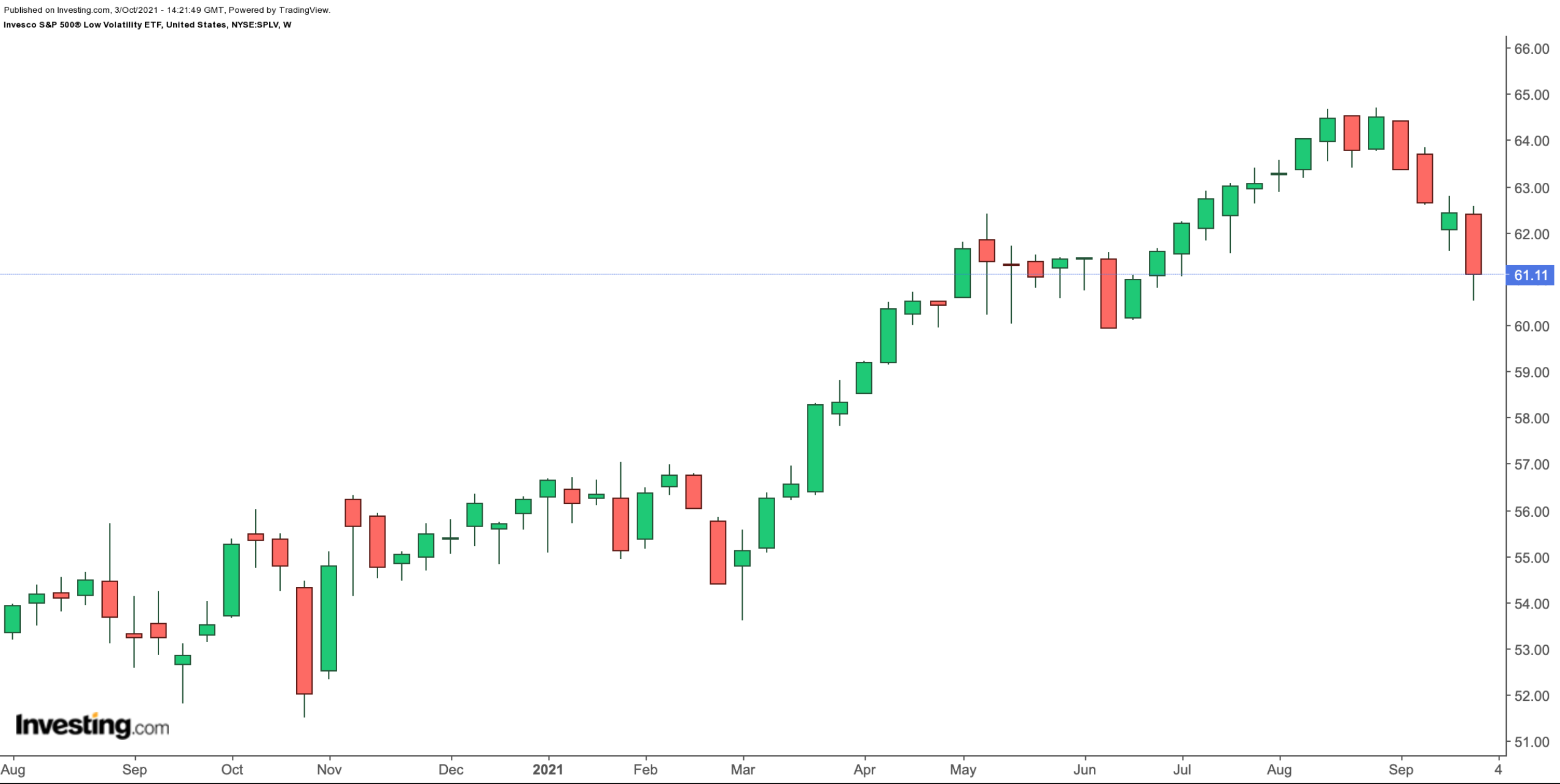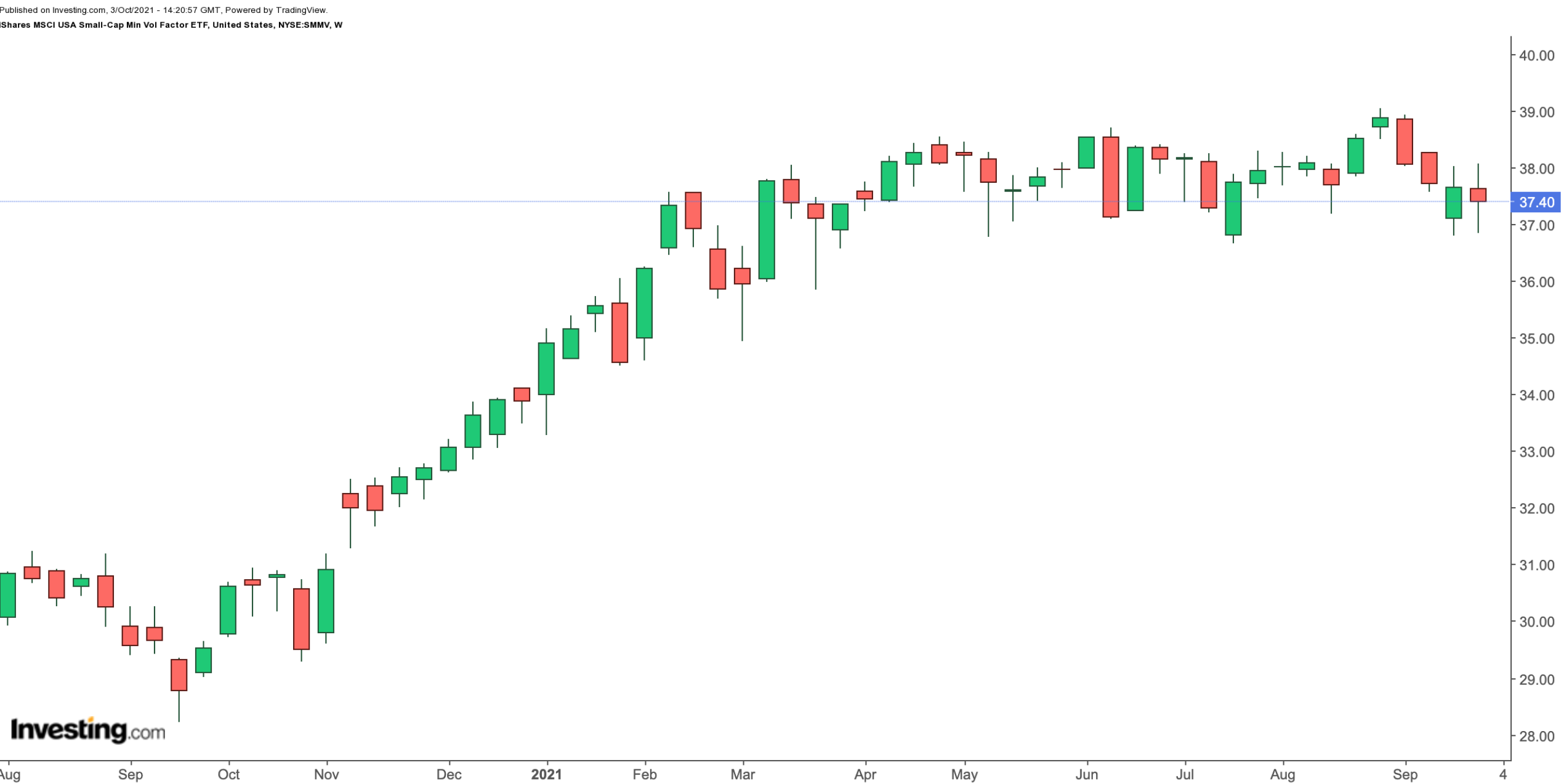September brought increased volatility and lower share prices in broader equity markets. As a result, Wall Street has been keeping a close eye on the CBOE Volatility Index (VIX), also known as the "fear gauge."
The VIX index measures the market's volatility expectation based on S&P 500 index options and usually shoots up when the S&P 500 drops sharply. As most investors would know, volatility, a statistical measure, refers to changes in the price of an asset (such as a stock, commodity, currency or index).
Over the summer months, equity markets were relatively serene. The VIX index started September around 16. By the third week of the month, it was well over 25 and then finished September shy of 22. Readers might remember that in March 2002, when the pandemic initially shocked investors, the VIX shot up to a record level of 82.69.
Meanwhile, the Dow Jones, the S&P 500 and NASDAQ Composite are down 3.3%, 4.2%, and 5.4% in the past month. As the last quarter of the year begins, it is not possible to foretell how markets will fare in October. Therefore, today's article discusses two exchange-traded funds (ETFs) that could help manage heightened volatility.
1. Invesco S&P 500 Low Volatility ETF
- Current Price: $61.11
- 52-Week Range: $51.51 - $64.70
- Dividend Yield: 1.55%
- Expense Ratio: 0.25% per year
Our first fund, the Invesco S&P 500® Low Volatility ETF (NYSE:SPLV) was developed to bring exposure to 100 members of the S&P 500 that have been the least volatile in the past year. In other words, such stocks with the lowest realized volatility get the highest weights. As a result, in October 2022, the fund is likely to look rather different than the current portfolio.

SPLV tracks the returns of the S&P 500® Low Volatility Index, which is rebalanced quarterly. The fund started trading in May 2011. In terms of the sub-sectoral breakdown, the consumer staples sector makes up the highest portion with 22.25%, followed by utility (17.97%) health care (14.92%), industrial (11.69%) and real state (757%) shares. The top 10 holdings account for 13% of net assets of $7.61 billion.
Verizon Communications (NYSE:VZ), Procter & Gamble (NYSE:PG), McDonald’s (NYSE:MCD), Colgate-Palmolive (NYSE:CL), Costco Wholesale (NASDAQ:COST), Hershey (NYSE:HSY), PepsiCo (NASDAQ:PEP) and Merck (NYSE:MRK) lead the names in the roster.
Over the past year, the fund is up about 13.6% and 8.7% in 2021. It hit a record high in early September, but has lost around 5.5% since then. Forward P/E and P/B ratios 20.62x and 4.69x. More risk-averse equity investors might want to research the SPLV further with a view to invest around $59.
2. iShares MSCI USA Small-Cap Min Vol Factor ETF
- Current Price: $37.44
- 52-Week Range: $29.02 - $39.04
- Dividend Yield: 1.40%
- Expense Ratio: 0.20% per year
The iShares MSCI USA Small-Cap Min Vol Factor ETF (NYSE:SMMV) gives access to small-capitalization (cap) US stocks with lower volatility characteristics relative to the overall small-cap US equity market.
Although different brokerages might have different definitions, a small-cap stock generally is one with a market capitalization of between $300 million and $2 billion. However, closer inspection of the fund’s holdings will show that many of the names have larger market caps.

SMMV, which has 354 holdings, tracks the returns of the MSCI USA Small Cap Minimum Volatility (USD) Index. The fund started trading in September 2016, and has around $849 million assets.
The health care sector makes up the highest portion of the fund with 20.04%. Next in line are financials (12.18%), information technology, IT, (10.28%), industrials (9.83%) and consumer discretionary (9.56%). The leading 10 stocks comprise 12.5% of all holdings.
Real estate investment trust (REIT) CubeSmart (NYSE:CUBE), which focuses on self-storage properties; American Homes 4 Rent (NYSE:AMH), another REIT that leases single-family homes; AptarGroup (NYSE:ATR), which manufactures consumer dispensing, packaging, sealing and drug delivery devices; Zynga (NASDAQ:ZNGA), which develops social games; and transportation logistics group Landstar System (NASDAQ:LSTR) top the names in SMMV.
The fund returned 27.1% in the past 12 months, and 10.4% in 2021. Like our previous fund SPLV, it also hit an all-time high in early September. Trailing P/E ratio is 21.35x and P/B ratio is 2.73x.
Predicting what is next for the markets is difficult. However, a fund like SPLV could appeal to conservative investors who want exposure to small-caps.
